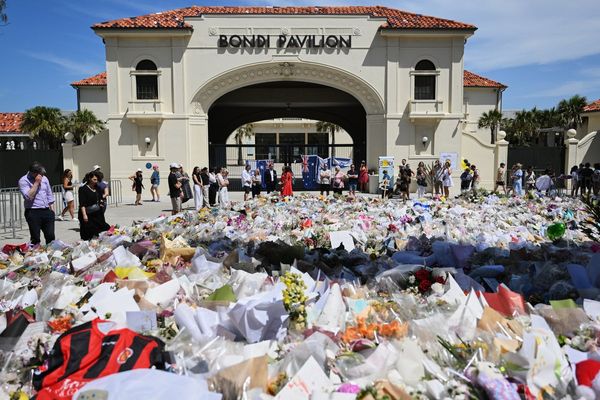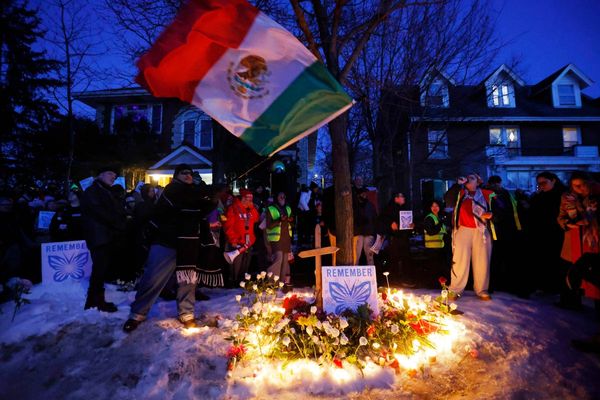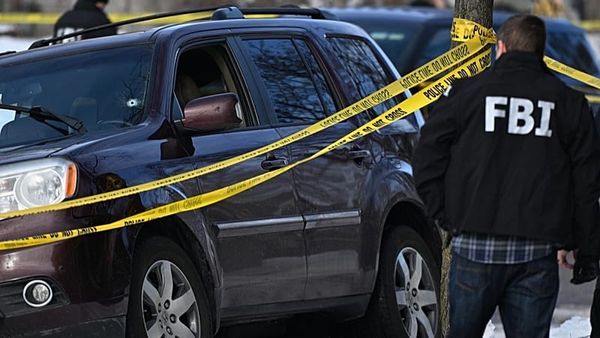
They include England’s most senior freemason, who is estimated to have received the equivalent of £18m for his royal duties; a princess who is 56th in line to the throne and lives in 1.6 hectares of grounds in Richmond Park – and a grace-and-favour apartment 12 miles away in St James’s Palace; and a duchess who previously lived in a 21-room apartment in Kensington Palace but has been moved to a cottage.
Who are the UK’s working royals, where do they live, and what do they do, exactly? How much have they been paid for their participation in official royal engagements?
These may seem simple questions. But finding the answers is complex and requires a degree of informed guesswork. Buckingham Palace stopped releasing information about specific payments to individual royals in 2010. Asked for a complete list of public engagements of the 11 working royals, a palace spokesperson replied: “We are not resourced to provide a research facility of this nature.”
The Guardian estimated how much members of the royal family have received in total from official payments for their royal duties. The payments come from either public money or private funds derived from huge hereditary estates that fund the monarch and male heir, the duchies of Lancaster and Cornwall.
In the past, the government listed in parliament each year the amount of taxpayers’ money that was paid to each family member. We extracted these payments going back to the 1950s from the parliamentary reports of Hansard, and declassified papers in the National Archives. However, since 2010 the amounts paid to individual royals have been kept secret.
Buckingham Palace declined to say whether the annual payments had increased or ceased since 2010. As a conservative estimate, we therefore took the last known figure of the payments received by members of the Windsor family in 2010 and used it for subsequent years.
We assumed that former working royals – such as Prince Andrew and Prince Harry – stopped receiving payments around the time of their last formal engagement noted in the court circular, an official daily record of royal events. For some royals, the amounts they have received are impossible to even estimate. While he was heir to the throne, Charles used the profits of the Windsors’ other huge landed estate, the Duchy of Cornwall, to fund himself, his wife, Camilla, and his sons and their wives. He did not specify how much each member of his immediate family was receiving.
To calculate the total payment received per person, we converted each annual payment into its modern-day equivalent using the Bank of England’s inflation calculator, and then totalled them. Our calculations for the number of royal engagements were based on the work of a retired insurance broker, Tim O’Donovan, who has compiled records of these engagements from the court circular since 1979. To further analyse the court circular, we commissioned a team of software engineers to build a machine-learning program to read and search as many of the documents as have been digitised.
A palace spokesperson declined to comment on the Guardian’s figures and said the detailed “private financial arrangements” of royal family members should “remain private, as they do for any other individual”.
The Guardian has calculated the total amount of money that each royal in the Windsor clan has received during their working life carrying out official functions. The payments come from either public money, or private funds derived from royal hereditary estates, or both. Calculations are based on the conservative assumption that payments have not increased since 2010, and they have been adjusted for inflation.
We have also calculated the total number of engagements that individual royals have taken part in over the last two decades. The data draws on entries in the court circular, an official daily record of royal events such as garden parties, flower shows, state dinners, attendance at sports events, royal celebrations and ribbon-cutting ceremonies. A palace spokesperson declined to comment on the Guardian’s figures and said the detailed “private financial arrangements” of royals should “remain private, as they do for any other individual”.

King Charles III
Monarch
Total payments: £612m
Total engagements (2002-22): 10,934
Yearly average: 521
As king, Charles, 74, is responsible for paying other working royals from the private privy purse income he receives from the Duchy of Lancaster. The annual payment from the sovereign grant from the Treasury – currently £86.3m – also pays for other costs of the working royals, such as property maintenance and travel. Charles is rumoured to be preparing to slim down the monarchy and reduce the number – and cost – of working royals.
As the Prince of Wales, Charles never received an official payment. Instead, his funding since 1952 onwards came from the Duchy of Cornwall, an estate that provides funds to whoever is the male heir to the throne. During his lifetime, Charles has received the equivalent of £612m from his estate, enough to provide him with a princely income as well as cover his official costs.
Now he is king, Charles can expect to receive about £20m a year from the Duchy of Lancaster. His preferred London home has for a long time been Clarence House, but he has had access to public and private royal residences including Buckingham Palace, Clarence House, the Sandringham estate, Balmoral Castle and estate, Windsor Castle, Highgrove House, Llwynywermod and Dumfries House.
Camilla, Queen Consort
Queen Consort
Total payments: unknown
Total engagements (2005-22): 3,886
Yearly average: 216
Camilla became an official working member of the royal family when she married Charles in 2005 in a relatively low-key civil ceremony at the Guildhall in Windsor. The cost of Camilla’s official duties and charitable work, as well as her personal staff and her living expenses, were paid for by Charles from his Duchy of Cornwall income. The sum is unknown.
As the queen consort, and soon-to-be queen, she has access to the same royal residences as the king. Camilla, 75, also has her own large country house, Ray Mill, in Wiltshire, that she kept as part of her 1995 divorce settlement with Andrew Parker Bowles.

Prince William and Catherine, Prince and Princess of Wales
Succession: heir to the throne
Total payments: unknown
William’s total engagements (2006-22): 2,038
Yearly average: 120
Catherine’s total engagements (2011-22): 1,169
Yearly average: 97
Prince William, 40, and his wife, Catherine, 41, share three homes: Amner Hall, on the king’s private Norfolk estate, Sandringham; Adelaide Cottage, near Windsor Castle; and Apartment 1A, a 21-room residence in Kensington Palace. Until now, William has received payments for official work from his father. The sums are not public. A review of Charles’s activities last year, for instance, lumped together funds that were given to William with undefined “capital expenditure” and transfers to savings accounts.
Now he is heir to the throne and has the title of Duke of Cornwall, William receives his own payments from that duchy, which are likely to amount to more than £20m a year. He has also reportedly received millions in bequests from his mother, Diana, and great-grandmother, Queen Elizabeth the Queen Mother. When his wife takes part in royal events, it is often national news, with her image displayed on newspaper front pages. However, the data suggests she does among the fewest events of working royals.

Prince Harry and Meghan, Duke and Duchess of Sussex
Succession: 5th in line
Total payments: unknown
Harry’s total engagements (2006-19): 1,190
Yearly average: 85
Meghan’s total engagements (2018-19): 179
Yearly average: 90
Before his exit from the royal family in 2020, Prince Harry’s upkeep and his official duties were – like his brother – funded by his father, Charles, from the profits of the Duchy of Cornwall. The amount has always been a secret.
After the decision by Harry, 38, and his wife, Meghan, 41, to relocate to California and cease their roles as working royals, they no longer receive funds for royal duties from the monarch. They are vacating their previous royal residence, Frogmore Cottage, in Windsor. Like his brother, Harry received multimillion-pound bequests from Diana and the queen mother. It has been estimated that Harry’s fast-selling memoir, Spare, and deals the couple made with streaming services, such as Spotify and Netflix, could be worth more than £100m.

Prince Andrew
Succession: 8th in line
Total payments: £12.9m
Total engagements (2002-19): 7,849
Yearly average: 436
Andrew, 63, the disgraced brother of the king, has lived a luxurious lifestyle, but precisely how he has funded it remains something of a mystery. One visible source of income was official payments he had received since 1978 for his royal engagements, which ended abruptly after his disastrous 2019 BBC interview about his friendship with the convicted child sex offender Jeffrey Epstein.
While no longer a working royal, he is estimated to have received almost £13m at today’s prices in official payments for his work as a royal in the four decades leading up to that point. He has reportedly been asked to leave Royal Lodge, a Grade II-listed, 30-room mansion set in 40 hectares (96 acres) of Great Windsor Park.
MPs alleged that Andrew acquired the 75-year lease for Royal Lodge for a knockdown price in 2003 from the crown estate, which has denied that he was given preferential treatment. His daughters, Beatrice and Eugenie, who are also not working royals, are understood to have had apartments in royal palaces. Buckingham Palace has indicated they paid private rent but declined to say how much.

Prince Edward and Sophie, Duke and Duchess of Edinburgh
Succession: 13th in line
Total payments: £6.5m
Edward’s total engagements (2002-22): 7,363
Yearly average: 351
Sophie’s total engagements (2002-22): 4,463
Yearly average: 213
The king’s youngest sibling, Prince Edward, 59, lives with his wife, Sophie, 58, in Bagshot Park, a 21-hectare estate near Windsor, on another lease bought from the crown estate in 1998. The lease was described by a senior MP as “the best housing benefit system in Europe”.
Monetising the property, the couple have let out the stables for decades. They received £130,000 in rent last year from a Canadian pharmaceutical company, on top of the (inflation-adjusted) £6.5m that Edward has received since 1982 for his royal work.
Previously, Edward ran a television company, Ardent Productions, and Sophie ran her own public relations firm. Both those careers ended in controversy. Sophie was caught in a tabloid sting making derogatory comments about other royals, while Edward was at the centre of a privacy row when his film company attempted to film Prince William at university.

Princess Anne
Succession: 16th in line
Total payments: £16.6m
Total engagements (2002-22): 11,088
Yearly average: 528
Often described as one of the hardest-working royals, Anne, 72, has put in more than 11,000 official appearances over the last two decades – more than any other living royal. She has received official payments since 1971, after she took up the role of working royal, being paid a total worth the equivalent today of £16.6m.
Her 290-hectare Gloucestershire estate, Gatcombe Park, has a Grade II-listed, 10-bedroom mansion; it was bought for her by her mother, Queen Elizabeth II, in 1976, three years after her first wedding. She kept the house after her divorce and has lived there since with her second husband, Sir Timothy Laurence. She also has use of an official flat at St James’s Palace.

Prince Richard and Birgitte, Duke and Duchess of Gloucester
Succession: 30th in line
Total payments: £12m
Richard’s total engagements (2002-22): 4,986
Yearly average: 237
Birgitte’s total engagements (2002-22): 2,660
Yearly average: 127
Some may be surprised that a royal who is first cousin once removed of King Charles has received the equivalent – in today’s money – of £12m in payments for royal engagements since 1974. The couple are currently selling their private eight-bedroom Northamptonshire mansion, Barnwell Manor, valued at £4.75m.
Richard inherited the property from his parents, Prince Henry and Princess Alice, Elizabeth II’s uncle and aunt. Princess Alice died in 2004 at the age of 102. One of the few royals to leave an open will, documents reveal she left an estate of £569,849 (equivalent now to £906,099).
The Duke and Duchess of Gloucester, 78 and 76, are understood not to have lived in Barnwell Manor since 1995. Instead, they moved to the splendour of an apartment in Kensington Palace. They have since moved to the Old Stables, a storied “cottage” also in Kensington Palace.

Prince Edward, Duke of Kent
Succession: 40th in line
Total official payments: £18m
Total engagements (2002-22): 3,963
Yearly average: 189
The Duke of Kent, 87, has been a working royal since 1961. Until 2021, he was perhaps best known for handing out the Wimbledon winners’ trophies as the president of the Lawn Tennis Association. His long stint has earned him the equivalent of £18m (inflation-adjusted).
Edward, a second cousin to the king, used to work as the UK’s royal trade envoy, a position later held by Prince Andrew. He is the country’s most senior freemason, having been appointed grand master of the United Grand Lodge of England in 1967. His wife, Katharine, 90, stepped back from royal duties more than 20 years ago and returned to her more humble job as a music teacher. The couple’s residence is Wren House, in Kensington Palace.

Princess Alexandra
Succession: 56th in line
Total payments: £17.2m
Total engagements (2002-22): 1926
Yearly average: 91
Princess Alexandra, a first cousin once removed of the king, trained as a nurse at Great Ormond Street hospital but became a working royal soon after Elizabeth II’s reign began in 1955. Now 86, she was, in previous decades, one of the more active working royals.
Her marriage to Angus Ogilvy, a successful businessman and second son of the 12th Earl of Airlie, introduced a new household income, separate to that received for participation in royal engagements. (Ogilvy declined an earldom for himself, and Alexandra’s children, James and Marina do not have royal titles.)
After their marriage in 1963, the couple moved into Thatched House Lodge, set in 1.6 hectares of grounds in Richmond Park. The leasehold was privately purchased from the crown estate on the open market. Alexandra still lives there and also has the use of a grace-and-favour apartment in St James’s Palace in central London.







